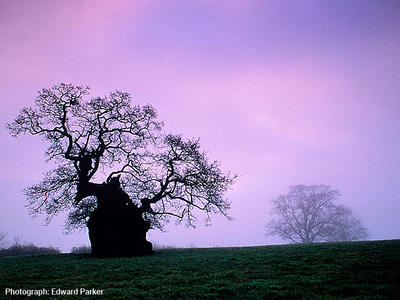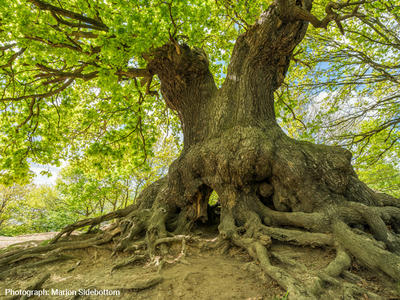Did you know?
Here are some amazing facts and figures about the Great British oak!
- Oak is the third most common broadleaf tree in woodland (after Birch and Hazel) and the most common tree species amongst open grown trees in Great Britain.
- There are around 121 million oak trees in UK woodland and almost 1 million in London alone.
- The UK has the largest area of ecologically important Atlantic (also known as Celtic Rainforests) oak woodlands covering 70,000 hectares.
- The UK has more ancient native oak trees than all the other EU countries combined.
- Over 5,000 oaks were used in building HMS Victory, Lord Nelson’s flagship at the Battle of Trafalgar in 1805.
- Being one of the hardest and most durable timbers, modern uses include flooring, wine barrels and building construction.
Did you know?
There are around 121 million oak trees in UK woodland and almost 1 million in London alone!
- It can take over 40 years for oaks to produce acorns.
- Over 2300 species of bird, mammal, fungi, invertebrate, bryophyte and lichens use oak trees. There are over 300 species restricted to oak trees and over 200 highly associated species.
- The UK has over 49,000 ancient, veteran and notable oak trees, half of which are found in non-woodland ecosystems. These support a greater diversity of associated species than younger trees.
- The social and environmental value of oak is estimated at £250m per year and is likely to be higher as this excludes aspects such as physical, mental, cultural, symbolic and educational benefits.
- Decline diseases of oak have been documented for over 100 years in the UK and Europe but there is limited evidence of their cause and effects. Oak declines are complex diseases involving both abiotic predisposing factors and biotic elements acting in a temporal sequence with cumulative effects.Extreme weather such as strong winds, drought, waterlogging, winter frosts and local conditions such as soil type, nutrient levels (N, P, S and K) and compaction – can cause mortality or have long-term impacts on oak health.
- Acute Oak Decline (AOD) is strongly correlated with environmental factors associated with predisposition to forest decline, i.e. elevated nitrogen and sulphur; lower rainfall, higher air temperatures, and lower elevations. It is more prevalent in warmer and drier sites and is estimated to affect 1/3 of woodland in England and Wales.
Did you know?
The UK has over 49,000 ancient, veteran and notable oak trees, half of which are found in non-woodland ecosystems.
- Before the 1970s oak woodland management practices followed those developed for conifers; hence, many broadleaved woods underwent a long period where between-tree competition was very high – this may be a predisposing factor for decline. Problems with between-tree competition can be exacerbated by a lack of management; 42% of forests in England are subject to low levels of or no management.
- In Europe, oak has over 130 species of associated insect pests. Oak is typically highly tolerant to defoliation, however repeated events can act as ‘inciting factors’, contributing to their decline.
- Different monitoring programs have collected varying data on oak populations: NFI (2009-present), Forest Condition Survey (1987-2006) and the Countryside Survey (1987-present).
- In 2014, the crown condition of 104,994 sample trees on 5,611 Level I plots across 24 countries was assessed. Of the main tree species, Quercus petraea and Q. robur had the highest mean defoliation (25.2%) and highest proportion of severely damaged and dead trees.
- Oaks have long generation times, infrequent masting years and poor natural regeneration in the UK. The majority of new oak woodland in Britain is established via planting but shortage of locally produced seed is an enduring problem.
- Oak is an important timber tree and breeding and selection programmes have been established in the UK and Europe to improve traits of economic importance such as growth rate, form and timber quality. These show medium to high heritability but may be less important for fitness or adaption to different climates.
- The UK is on the north-western edge of the distribution range for oak and therefore may contain valuable and uniquely adapted individuals and/or genes. Wind dispersal of pollen and bird and small mammal dispersal of seeds mean that genes are moved freely between populations of oak (high levels of gene flow) so geographically isolated oak stands are not genetically isolated. Open grown solitary trees experiencing a higher proportion of long distance gene flow than woodland trees.









